Applications of Bi-plane Angiography
Biplane angiography is a versatile medical imaging technique with many applications in treating various medical conditions.
Some of its key applications include better understanding and execution following neurovascular interventions :
- Cerebral angiography/ DSA
- Stroke thrombectomy
- Aneurysm coiling and flow diverter placement
- AVM embolization
- Carotico-cavernous fistula embolization
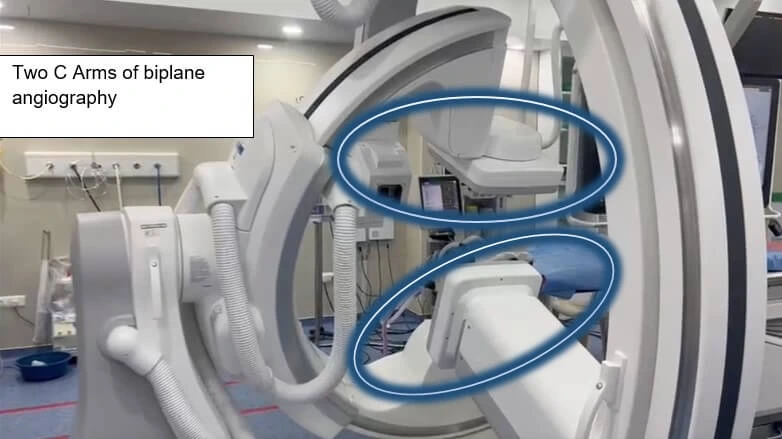
Cerebral angiography/ DSA
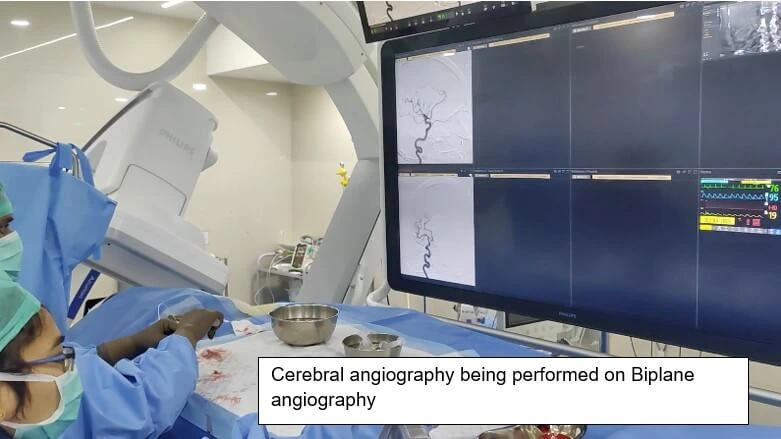
Cerebral angiography is a medical examination to diagnose problems within the brain's blood vessels. It involves injecting a contrast dye into the blood vessels of the brain.
Although it is an invasive procedure, cerebral angiography is considered a safe and effective diagnostic tool for detecting and analysing various conditions such as aneurysms, arteriovenous malformations, blood clots, blocks in blood vessels.
Biplane angiography helps in completeing the procedure in shorter procedure duration and lesser contrast dose.
Stroke thrombectomy
Strokes can be life-threatening medical emergencies that require rapid diagnosis and treatment. Bi-plane angiography allows doctors to visualize and access the brain blood vessels more faster as the site of blockage and navigation of the neuro-thrombectomy device are better visualised in two planes.
Blockages in distal vessels ( deeper and smaller vessels) can also be cleared more effectively and safely using biplane technology. Tough to clear blockages like dissections, chronic long standing occlusions can also be accessed and cleared more accurately using this technology.
Time is the most important determining factor in Effectively patients with acute stroke get faster treatment and resultant better outcomes by using biplane technology.


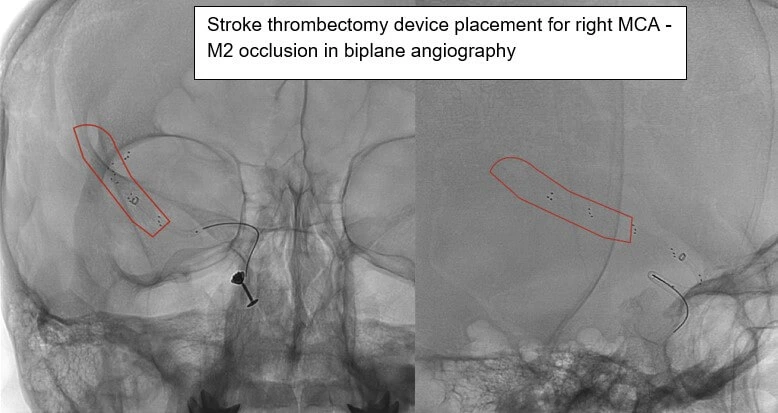
Aneurysm
All these details are exquisitely delineated by biplane angiography system from simultaneous projections of 2 fluoroscopic c arms. What it implies to the patient is that, the entire endovascular procedure is done with utmost accuracy, with minimum risk of any complications.
This is practically applicable in multilobulated aneurysms, complex wide neck aneurysms, fusiform aneurysms for treatment by either endovascular coiling or flow diverter placement.
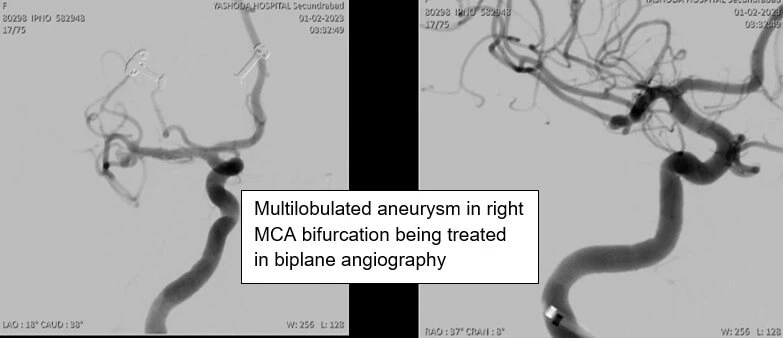
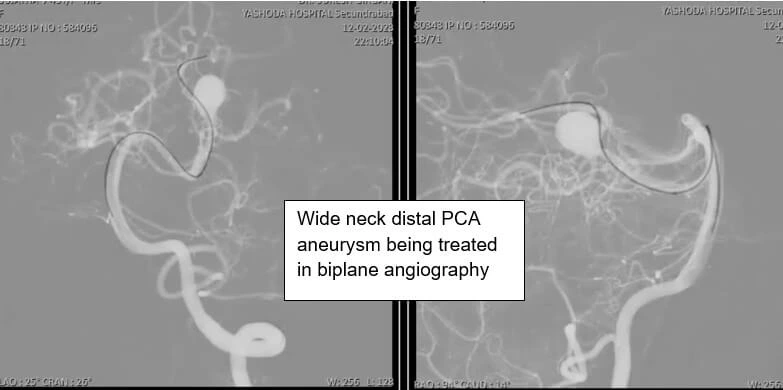
All these details are exquisitely delineated by biplane angiography system from simultaneous projections of 2 fluoroscopic c arms.
What it implies to the patient is that, the entire endovascular procedure is done with utmost accuracy, with minimum risk of any complications.
This is practically applicable in multilobulated aneurysms, complex wide neck aneurysms, fusiform aneurysms for treatment by either endovascular coiling or flow diverter placement.
AVM embolization
Arteriovenous malformations are abnormal connections between arteries and veins. AVMs in the brain can lead to serious complications such as haemorrhage, seizures, and neurological deficits.
By using AVM angiography, doctors can visualize the structure and blood flow in the AVM, which helps them determine the best treatment course.
AVM curative treatment by embolization is supposed to be most technically challenging procedure among all neuroendovascular procedures. This procedure involves selectively navigating a small tube or microcatheter into the AVM in the brain and injecting and percolating liquid glue like material into the AVM nidus.
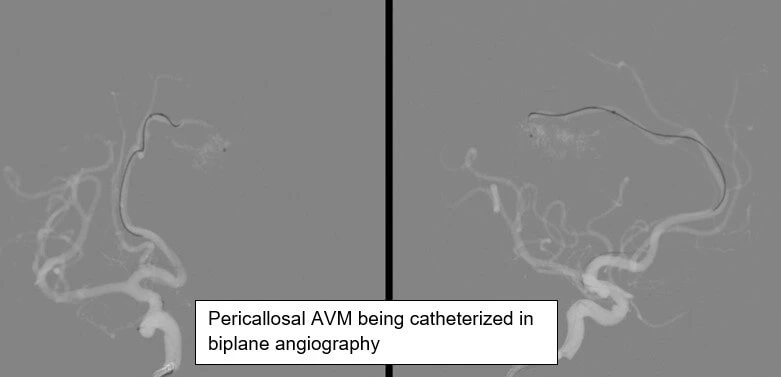
While doing embolization dynamic information about extent and location of glue percolation in various components of AVM is essential for safe and effective embolization, which is essentially provided by the 2 planes biplane angiography in real time.
Carotico-cavernous fistula embolization and dural AVF embolization
Carotico cavernous fistula is an abnormal communication between carotid artery and cavernous sinus resulting either from trauma or spontaneously. Understanding the communication between complex cavernous sinus and carotid artery is essential for treatment planning. Endovascular embolization is the only definitive treatment for CCF cure. Bi-plane angiography technology allows doctors to pinpoint the exact location and severity of the fistula.
In few cases endovascular drilling of the adjacent venous sinuses like inferior petrosal sinuses is essential to get access into the fistula. This complex procedure can be done safely in biplane angiography by mirroring the normal opposite side on to the same side sinus.
DR.SURESH GIRAGANI CONSULTANT INTERVENTIONAL RADIOLOGIST at Apollo Hospital, has more than Seventeen years of clinical experience in vascular interventions with a special interest in neurovascular and peripheral vascular disease interventional procedures.
Services
Quick Links
Contact Us
Copyright 2021 Neuro All rights reserved. | Powered By KBK Business Solutions


